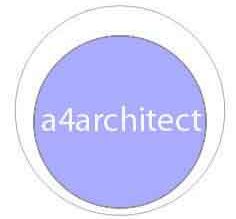Kenya Construction Industry at 50 years.
Kenya attained its independence from the British in 1963. Its now 50 years since. Below is an overview on the changes that have taken place within the construction industry.
Prior to colonization of Kenya by the British in 1895, the architecture in Kenya was traditional. Each community shaped its buildings depending on climatic factors , material availability and space use.
Areas that had less rains could be able to sustain earthen roofs eg Manyattas. Areas that had heavy rainfall had steep roof pitches eg Kisii. Areas that had high humidity had grass walled huts eg Coast province.
After 1895, the British introduced their architecture. This architecture was mainly signified by use of hand curved masonry walling, clay roof tiles and wooden windows. Examples of this is the Kipande house building along Kenyatta avenue built in 1913. It was designed by Gurdit Singh.
Between the early 1900s till 1963.
Between the early 1900s till 1963, the Kenyan architecture was a minute of traditional indigenous huts for locals and the masonry buildings used by the British colonists.
All the traditional indigenous huts were at ground floor level execpt at the coast where the arabic architecture influence had houses of several levels such as the Fort Jesus built in 1591 by the Portuguese and Arabs.
Between 1963 and 1970.
City Hall building was constructed in 1957.
Parliament building was also built during the same period.
Watch the 1950s video below.
http://www.britishpathe.com/video/new-parliament-building-in-nairobi
The Kenya Nairobi High court building was also constructed during the 50s.
Indigenous Africans shifted from the grass thatch and mud hut architecture into British style masonry stone walled , pitched roofed houses.
the Kenyatta government spearheaded construction of high rise buildings such as KICC building constructed in 1967 by Solel Boneh and Factah contractors. It was designed by Architect David Mutiso and Architect Karl Henrik Nostvik.
Hilton hotel was also constructed during this period.
Housing estates such as Jericho and Jerusalem in Eastlands, Nairobi came up.
Most housing units are still in only 1 level.
Between 1970 to 1980.
More high rise buildings were constructed in Nairobi CBD. The NSSF building was constructed in 1974.
Notable of these is the Nyayo house towers which commenced in 1979.
BETWEEN 1980 to 1990.
Notable high rise structures are the City Hall Annex building built in 1981.
Residential estates such as Buru Buru were competed then. Buru Buru phase 5 was completed in 1982.
Umoja 1 and 2 estates were also completed during this period.
BETWEEN 1990 and 2000.
This period marked a slowdown in the Kenyan construction industry. Very few new buildings and residential estates were constructed. Notable buildings constructed during this period is the I and M building along Kenyatta avenue.

Residential units shifted into 2 levels in height.
BETWEEN 2000 and 2010.
This period was marked by a reduction of bank interest rates. This enabled Kenyans to easily obtain financing for construction. Towns such as Kitengela ,Rongai and Ruai literally grew overnight. Residential estates for sale came up all over the country. New high rise buildings came up around Nairobi CBD. Upper Hill , Westlands , Kilimani and Hurlingham grew overnight with numerous skyscrapers.
A shift from the previous construction materials characterized by concrete walls was noted. More high rise buildings were now being constructed with larger glass facades.

AFTER 2010 and beyond.
New highrise buildings are coming up all over the country. buildings such as Delta in Westlands have completely changed the sky scape.

Residential units have taken a new dimension into high rise from the previous bungalow and maisonette types.

Now that we have internet, the influence of new architecture and construction methods from other parts of the world will aid in hastening the movement of design type into more modern looking buildings.
Am sure that the next 10 years will completely change the way we view Real Estate. New methods of financing buildings, new construction material, higher populations and scarcity of land are some of the factors that will ensure the construction types are completely different from what we see now. Nairobi will look like Dubai or Shanghai.
Dubai.

Shanghai.

Francis Gichuhi Kamau, Architect.
0721410684


Leave a Reply